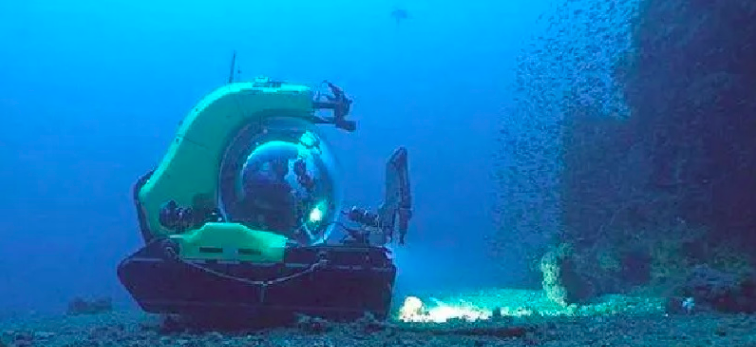Union Earth Sciences Minister Jitendra Singh on Oct 29 launched India’s first manned ocean mission “Samudrayan” at Chennai. Singh, “This niche technology shall facilitate Ministry of Earth Sciences in carrying out deep ocean exploration of the non-living resources such as polymetallic manganese nodules, gas hydrates, hydro-thermal sulphides and cobalt crusts, located at a depth between 1,000 and 5,500 metres,” he added.
Significantly, The Samudrayan project has been undertaken by the National Institute of Ocean Technology (NIOT) and It will be a part of the Rs 6,000 crore Deep Ocean Mission. It is designed to carry 3 persons in 2.1meter diameter Titanium Alloy Personnel Sphere with an operational endurance of 12hrs and systems to support emergency endurance up to 96hrs. It could work at a depth between 1000 and 5500 meters. The major Focus areas of the Project are Ocean climate change advisory services, Underwater vehicles, Underwater robotics-related technologies and Deep-sea mining: Exploitation of polymetallic nodules.
According to the official release by the Earth science ministry, “With the launch of this unique ocean mission, the country joins the elite club of nations such as the US, Russia, Japan, France, and China to have such underwater vehicles for carrying out subsea activities,”. MoES officials explained that based on the experience gained over two decades in the development of unmanned robotic vehicles and systems for 6000 m operational capability, MoES-NIOT is indigenously developing a manned submersible with a depth capability of 6000 meters under the aegis of Deep Ocean Mission.
Significantly, The manned submersible is designed to carry three persons in 2.1-meter diameter Titanium Alloy Personnel Sphere with an operational endurance of 12h and systems to support emergency endurance up to 96h. Based on the experience gained over two decades in the development of unmanned robotic vehicles and systems for 6,000 m operational capability, the Ministry and the NIOT is indigenously developing a manned submersible with a depth capability of 6,000 meters under the aegis of Deep Ocean Mission.
Dr Jitendra Singh said, The preliminary design of the manned submersible MATSYA 6000 is completed and realisation of the vehicle has been started with various organisations including the ISRO, the IITM and the DRDO roped in to support the development. He said that the underwater vehicles are essential for carrying out subsea activities such as high-resolution bathymetry, biodiversity assessment, geo-scientific observation, search activities, salvage operation, and engineering support, the Minister added.
The Minister informed that sea trials of 500 metre-rated shallow water version of the manned submersible are expected to take place in the last quarter of 2022 and the MATSYA 6000, the deep-water manned submersible will be ready for trials by the second quarter of 2024. “The advancing technologies in metallurgy, energy storage, underwater navigation and manufacturing facilities provide opportunities for developing more efficient, reliable and safe manned submersibles,” Singh added.
“Even though unmanned underwater vehicles have improved manoeuvring and excellent vision systems resembling direct observation, manned submersibles provide a feel of direct physical presence for researchers and have better intervention capability. With the advancing subsea technologies, the recent Fendouzhe manned submersible developed by China in 2020 has touched 11,000m water depths,” the Minister asserted.
The manned submersible is designed to carry three persons in a 2.1 meter diameter titanium alloy personnel sphere with an operational endurance of 12 hours and systems to support emergency endurance up to 96 hours. Some of the critical subsystems of the manned submersibles are the development of titanium alloy personnel sphere, human support and safety system in enclosed space, low-density buoyancy modules, and the ballast and trim system (BTS).
Others include pressure compensated batteries and propulsion systems, control and communication systems and launching and recovery systems. The system design, the concept of operation, subcomponents functionality and integrity, emergency rescue, and failure mode analysis are reviewed and certified as per the rules of the International Association of Classification and Certification Society for man-rated usage of manned submersible at a depth of 6,000 meters.


